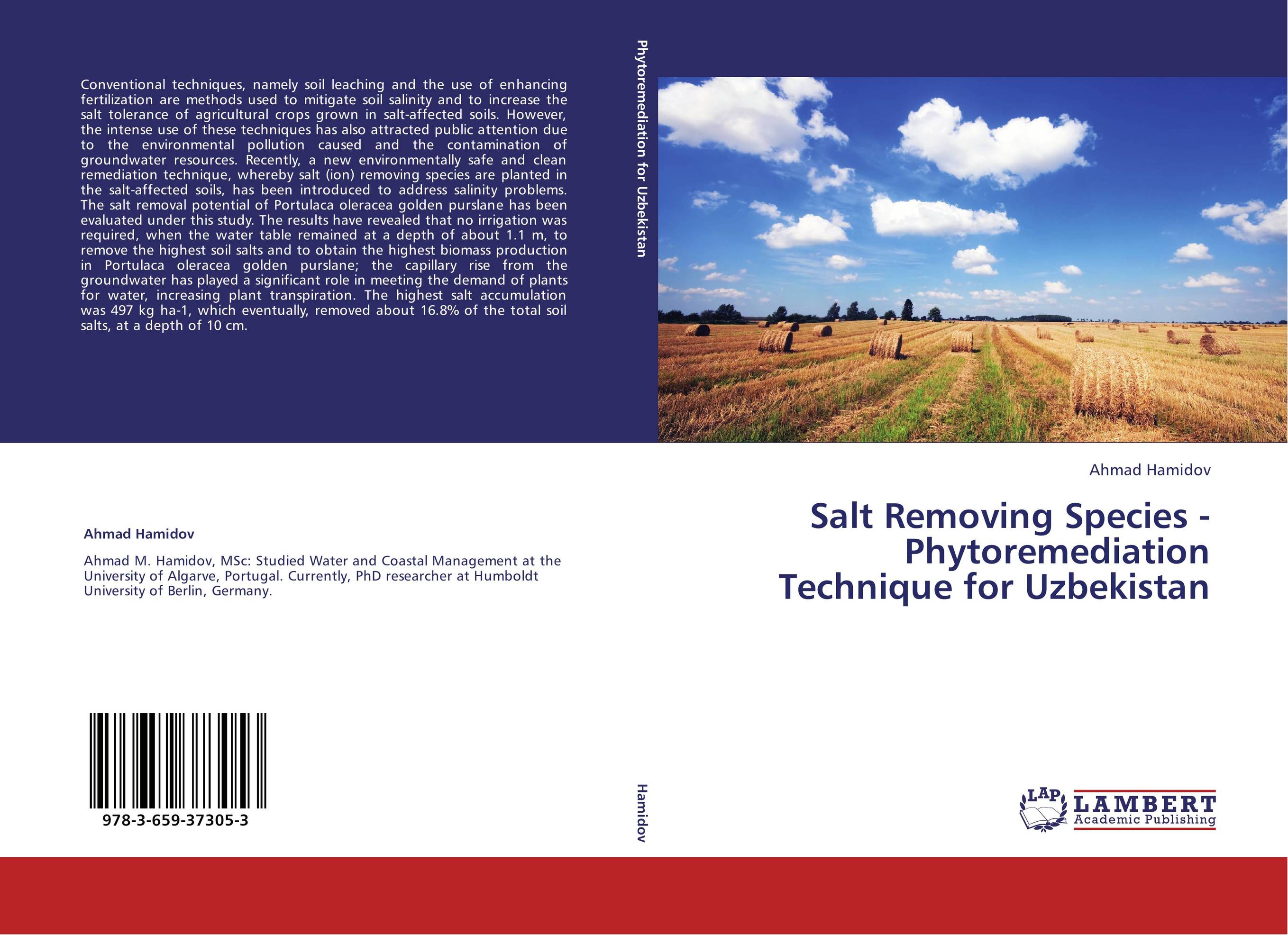| Поиск по каталогу |
|
(строгое соответствие)
|
- Профессиональная
- Научно-популярная
- Художественная
- Публицистика
- Детская
- Искусство
- Хобби, семья, дом
- Спорт
- Путеводители
- Блокноты, тетради, открытки
Salt Removing Species - Phytoremediation Technique for Uzbekistan.

В наличии
| Местонахождение: Алматы | Состояние экземпляра: новый |

Бумажная
версия
версия
Автор: Ahmad Hamidov
ISBN: 9783659373053
Год издания: 2013
Формат книги: 60×90/16 (145×215 мм)
Количество страниц: 112
Издательство: LAP LAMBERT Academic Publishing
Цена: 32112 тг
Положить в корзину
Позиции в рубрикаторе
Отрасли экономики:Код товара: 120892
| Способы доставки в город Алматы * комплектация (срок до отгрузки) не более 2 рабочих дней |
| Самовывоз из города Алматы (пункты самовывоза партнёра CDEK) |
| Курьерская доставка CDEK из города Москва |
| Доставка Почтой России из города Москва |
Аннотация: Conventional techniques, namely soil leaching and the use of enhancing fertilization are methods used to mitigate soil salinity and to increase the salt tolerance of agricultural crops grown in salt-affected soils. However, the intense use of these techniques has also attracted public attention due to the environmental pollution caused and the contamination of groundwater resources. Recently, a new environmentally safe and clean remediation technique, whereby salt (ion) removing species are planted in the salt-affected soils, has been introduced to address salinity problems. The salt removal potential of Portulaca oleracea golden purslane has been evaluated under this study. The results have revealed that no irrigation was required, when the water table remained at a depth of about 1.1 m, to remove the highest soil salts and to obtain the highest biomass production in Portulaca oleracea golden purslane; the capillary rise from the groundwater has played a significant role in meeting the demand of plants for water, increasing plant transpiration. The highest salt accumulation was 497 kg ha-1, which eventually, removed about 16.8% of the total soil salts, at a depth of 10 cm.
Ключевые слова: Uzbekistan, soil salinity, phytoremediation, conventional techniques, clean techniques, Halophytes



